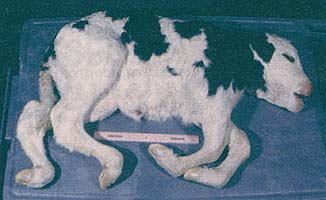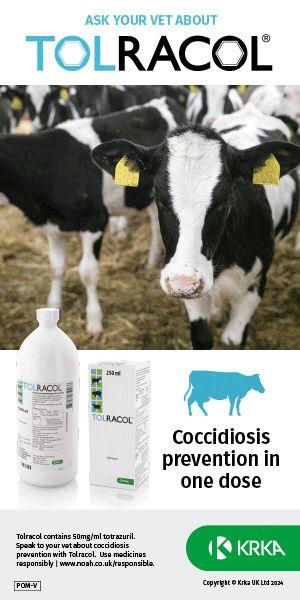Complex Vertebral Malformation (CVM)
This genetic disease of Holstein cattle was first reported in the year 2000 in Denmark after an investigation into an increasing number of calves that were born deformed.
Since the first report the condition has been reported in the Netherlands, the USA and the UK.
What is CVM?
CVM is a genetic disease, which results in abnormal calves. It is a recessive condition, which means that both dam and sire must be a carrier of the CVM gene if the calves are to be affected. This also means that even if both parents are affected only ¼ of calves will be abnormal. So far the disease has been reported only in Holstein cattle, no other breeds have been shown to be affected. Bulls that have been identified as carriers include T Klassy, KOL Nixon, T Burma, Etazon Lord Lily and Carlin-M Ivanhoe Bell.
As the name suggestions the major effects of CVM are on the bones of the spine (vertebrae). The neck and /or the chest are shortened because of badly formed or fused vertebrae. The deformation often leads to a curved spine.
Other associated problems include abnormal ribs, contracted carpal joints, and contracted and rotated fetlocks. Heart defects, such as the major blood vessels being in the wrong place are seen in around 50% of cases.
Most calves are either aborted early or stillborn. Some do survive birth but die very soon after.

Fig 1 Calf with CVM (from www.selectsires.com/ cvm_reprint.html)
Diagnosis
- Clinical signs
- Radiography is essential to rule out most other types of vertebral malformation
- A genetic test is available which will confirm whether CVM is involved
- Getting your vet involved when you have malformed calves will identify problems such as CVM, before they cost you significant amounts of money
Prevention
The best method of prevention is to not use carrier bulls. All responsible AI studs will have screened all their bulls for CVM and should be able to inform you whether their bulls are carriers or not. If you avoid using carrier bulls you will not have a problem with CVM in your herd. If you need to use carrier bulls, check the pedigree of your cows and avoid using carrier bulls on those cows whose pedigree suggests that they might be carriers. For most farms actually detecting carrier cows is not going to be economically beneficial.





